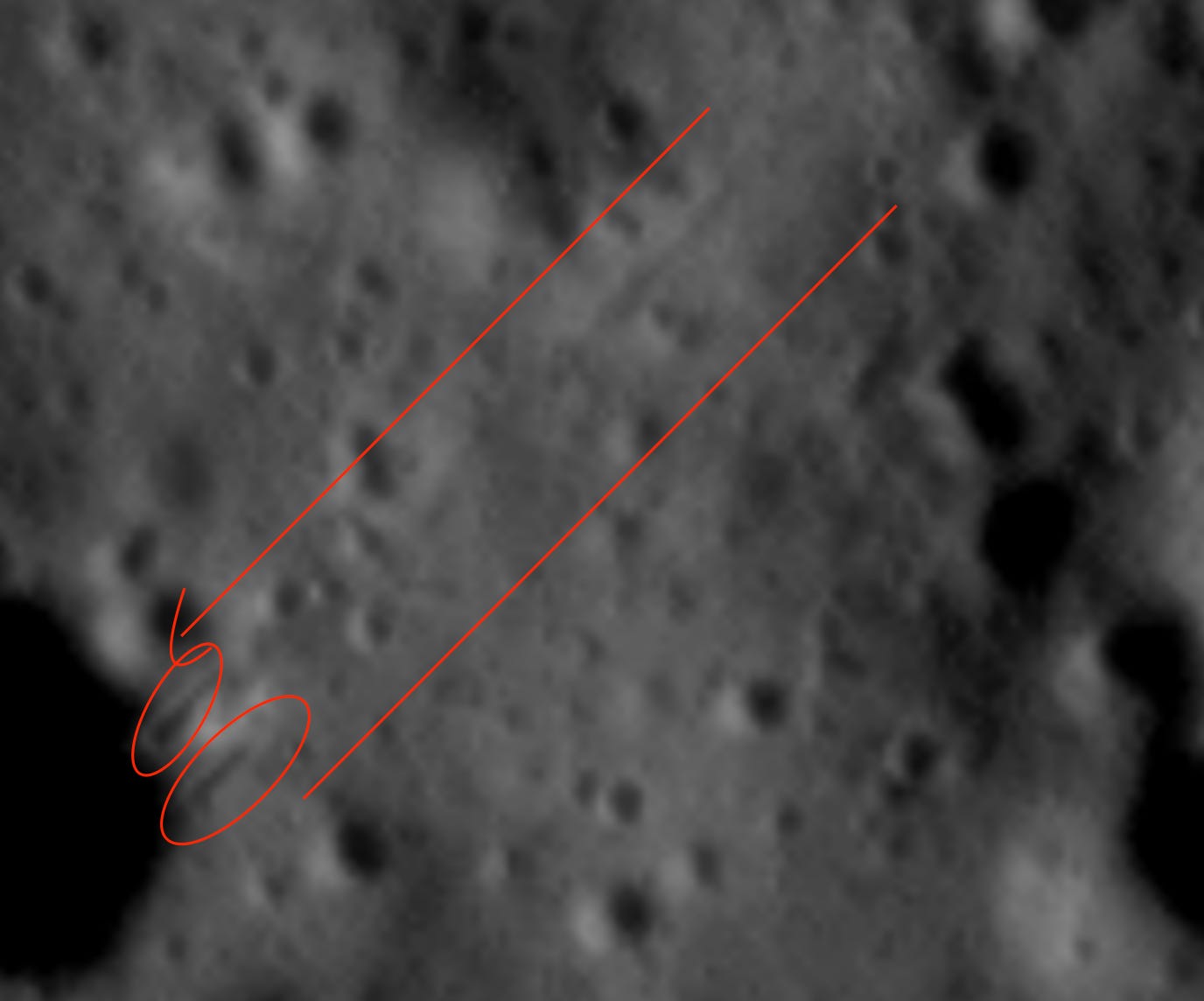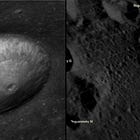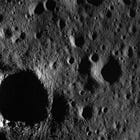IM‑2 Athena: An Almost‑Successful South Polar Landing — Intuitive Machines Mission 2
Too close yet too far away from a perfect polar touchdown of Athena. New High Resolution images reveal key insights on what happened during last seconds of Intuitive Machine's Nova-C Athena
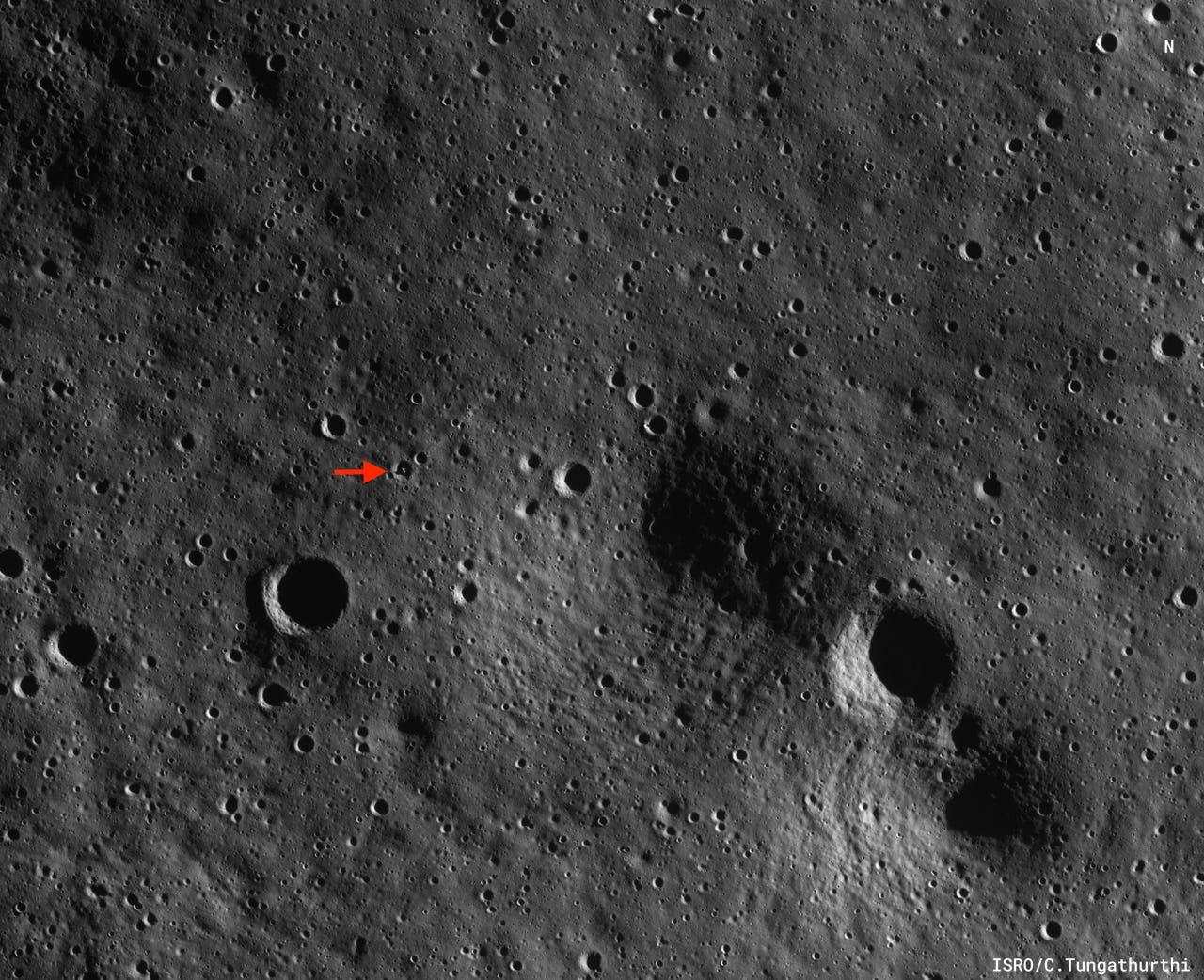
The IM-2 mission, part of NASA's Commercial Lunar Payload Services (CLPS) program, launched on February 26, 2025, at 7:16 p.m. EST (00:16 UTC on February 27) aboard a SpaceX Falcon 9 rocket from Launch Complex 39A at NASA's Kennedy Space Center in Florida. The Nova-C lander, named Athena, carried NASA science instruments, including a drill and mass spectrometer for detecting lunar volatiles, along with commercial payloads like a micro-rover and a hopping drone. Following liftoff, Athena separated from the rocket's second stage about 45 minutes later and established communication with ground controllers, confirming it was on course for the Moon. The launch also included secondary payloads, such as NASA's Lunar Trailblazer orbiter, which deployed successfully en route
During its approximately eight-day transit to the Moon, Athena performed several trajectory correction manoeuvres to refine its path, with the first occurring shortly after launch and subsequent burns ensuring precise alignment for lunar orbit insertion.
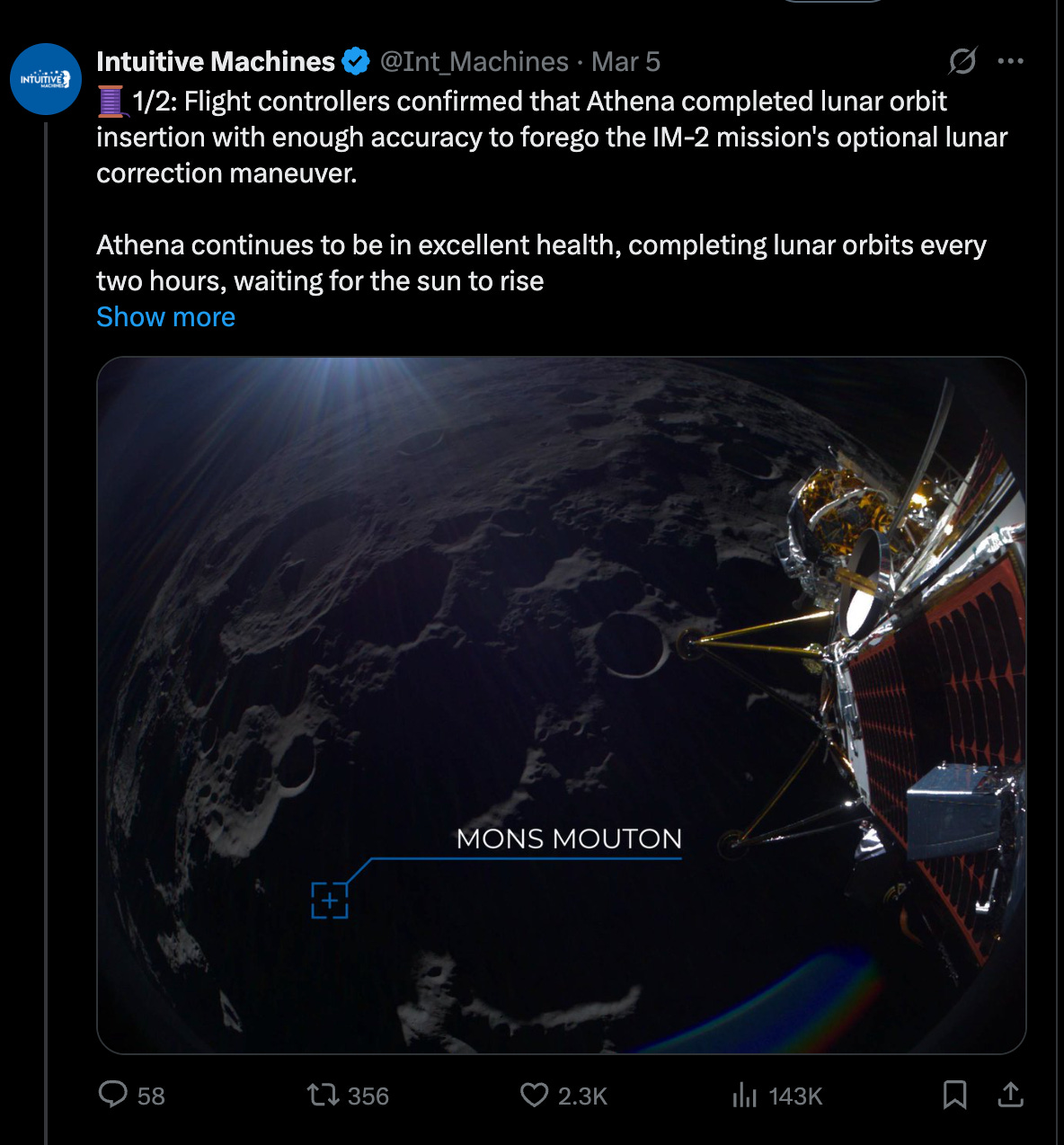
On March 3, 2025, the lander executed a 492-second main engine burn to enter a circular low lunar orbit at about 100 km altitude, where it spent roughly three days a total of 39 Lunar orbits conducting system checks and imaging the surface. Flight controllers at Intuitive Machines' Nova Control in Houston monitored the spacecraft's health, calibrating navigation cameras and preparing for descent, while Athena captured detailed images of the lunar south pole region near its target site.
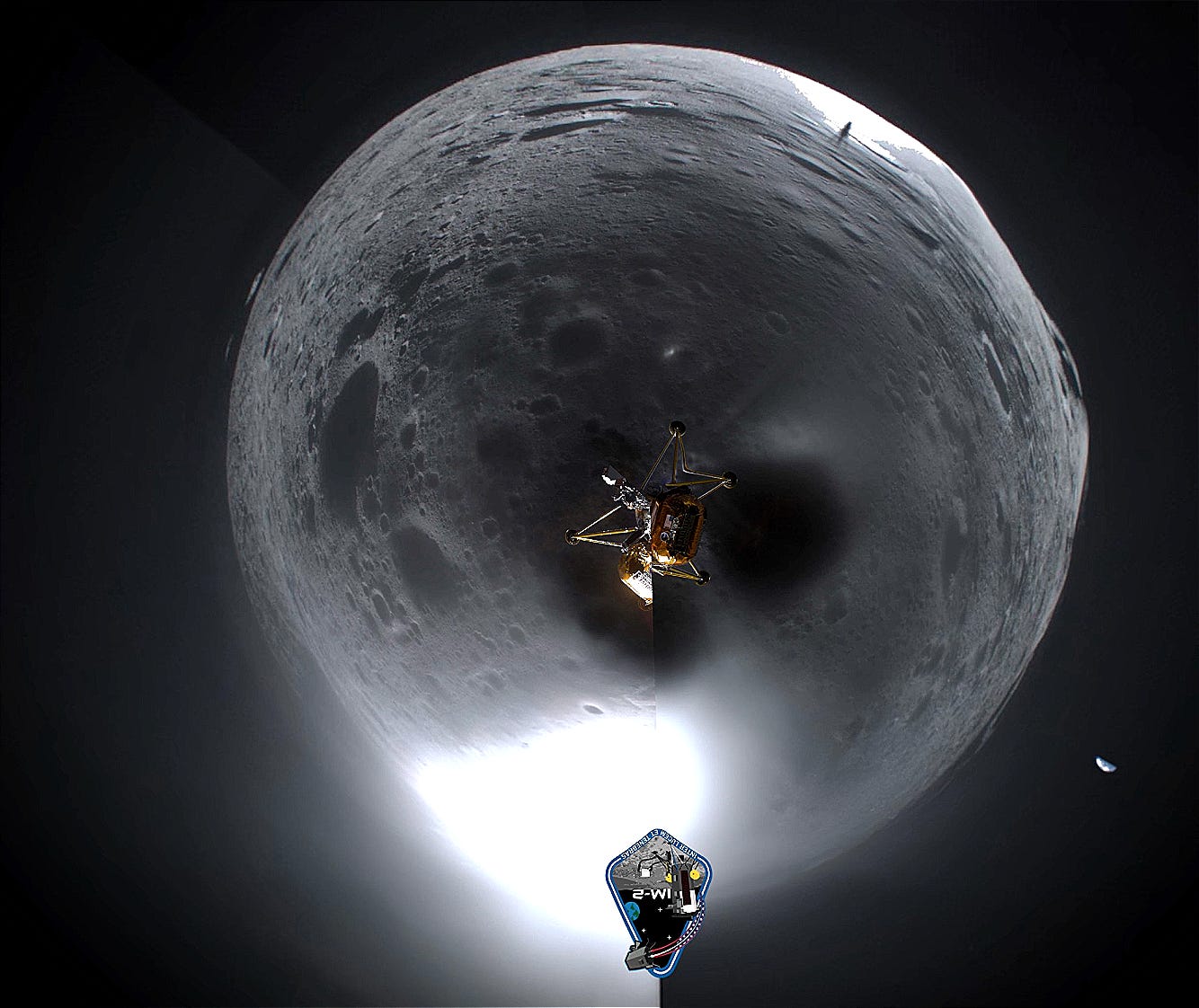
Unfortunately, just as with its predecessor Odysseus from the IM-1 mission, the Nova-C lander Athena for IM-2 experienced significant issues during its final descent. A faulty laser altimeter, compounded by dust interference, led to inaccurate altitude readings, causing the spacecraft to descend at a higher-than-optimal speed of approximately 6 meters per second vertically and 2 meters per second horizontally. This resulted in a hard landing that tipped Athena over on its side inside a shadowed crater at Mons Mouton, roughly 1,300 feet (400 meters) from its intended target site near the lunar south pole at -84.7906, 29.1957 in 20m shallow crater.
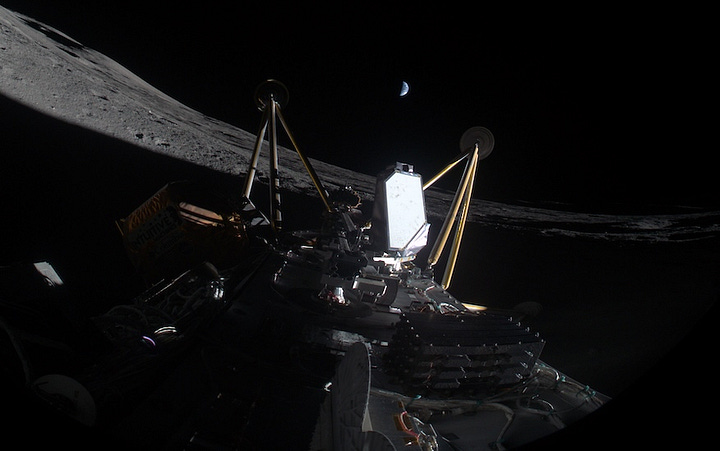
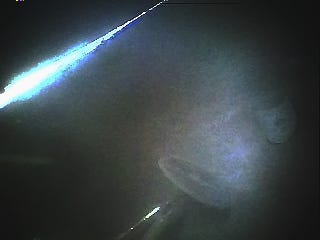
A ‘Not-so’ Optimal Landing
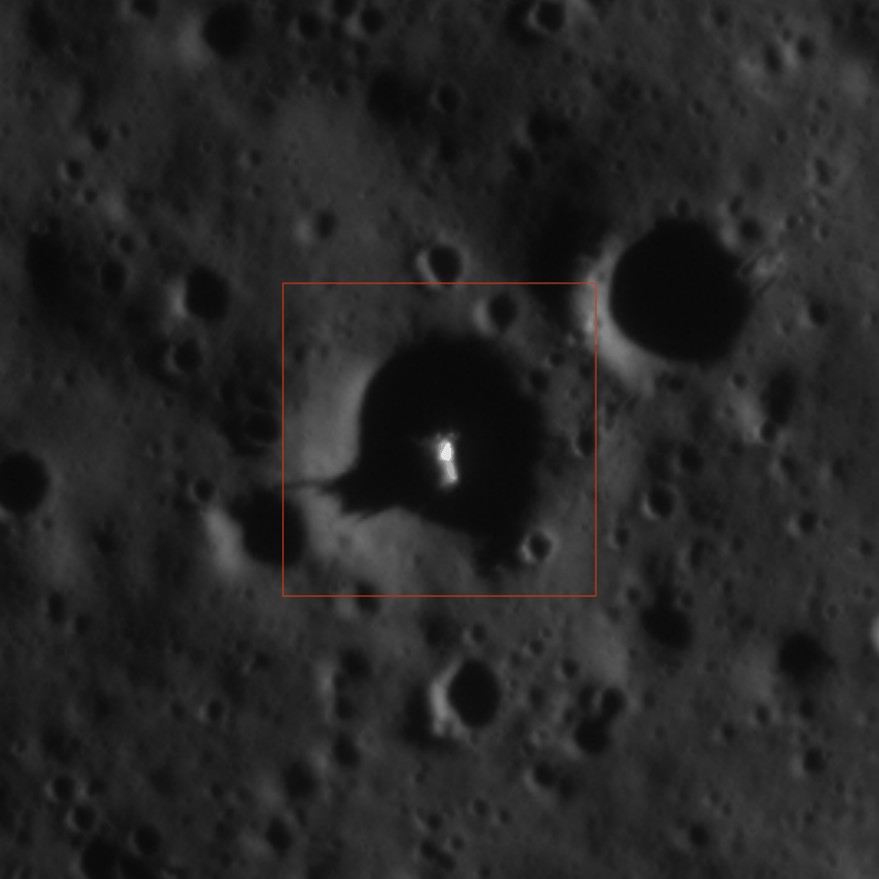
Just a few hours after the Lunar Reconnaissance Orbiter Camera (LROC) captured its initial oblique view of the ill-fated IM-2 lander Athena on March 7, 2025, the Orbital High-Resolution Camera (OHRC) onboard the Chandrayaan-2 orbiter obtained imagery from its own vantage point. This additional data provides new insights into the final moments of Intuitive Machines’ Nova-C Athena mission and strongly supports the initial post-mortem assessments of the lander’s tipped-over state in a shadowed crater near Mons Mouton at the lunar south pole.
The Chandrayaan-2 images, taken on March 7, 2025, at 21:31 UTC—just four and a half hours after the LROC capture—depict Athena’s final resting place: hard-landed in a shallow crater, with its sideways orientation confirming operational loss mere hours into its operations. A follow-up image, acquired during the next orbital pass at 23:30 UTC, further documents the aftermath and surrounding surface context.
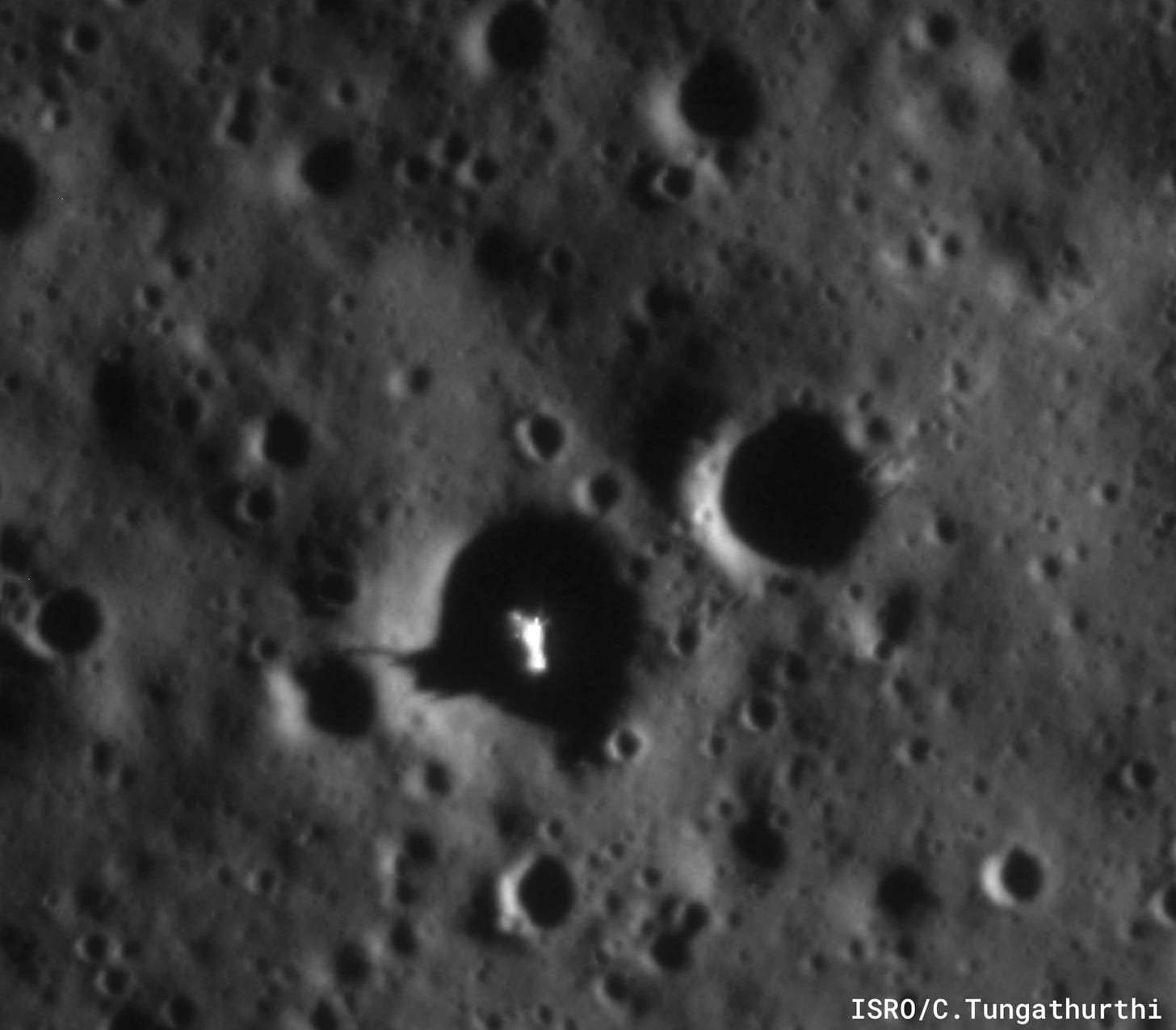
During the terminal descent and landing phase, Athena autonomously touched down but came to rest on its side in a shadowed crater, not in the upright configuration originally planned. The IM-2 team activated payloads immediately after landing, gathering and transmitting as much data as possible before the lander lost power due to its sideways position and limited sunlight.
The failure of the IM-2 Athena lander was attributed to its faulty laser altimeter and according to official post-mission reviews, during the descent the laser altimeter—which is critical for measuring altitude and controlling the speed and timing of the final landing—experienced significant “signal noise and distortion.” This interference prevented the system from providing accurate distance-to-ground readings. As a result, Athena’s landing software incorrectly believed it was still higher above the surface and maintained a higher-than-safe descent speed.
This fault in altitude data likely caused Athena to contact the lunar surface with excessive velocity, resulting in the lander tipping onto its side and either skidding or rolling into its final resting orientation within the crater. While the post-mission technical review frames this as a ‘probable scenario’, close analysis of the high-resolution Chandrayaan-2 OHRC images—captured by ISRO’s most capable lunar camera—supports this conclusion with a substantial degree of certainty.
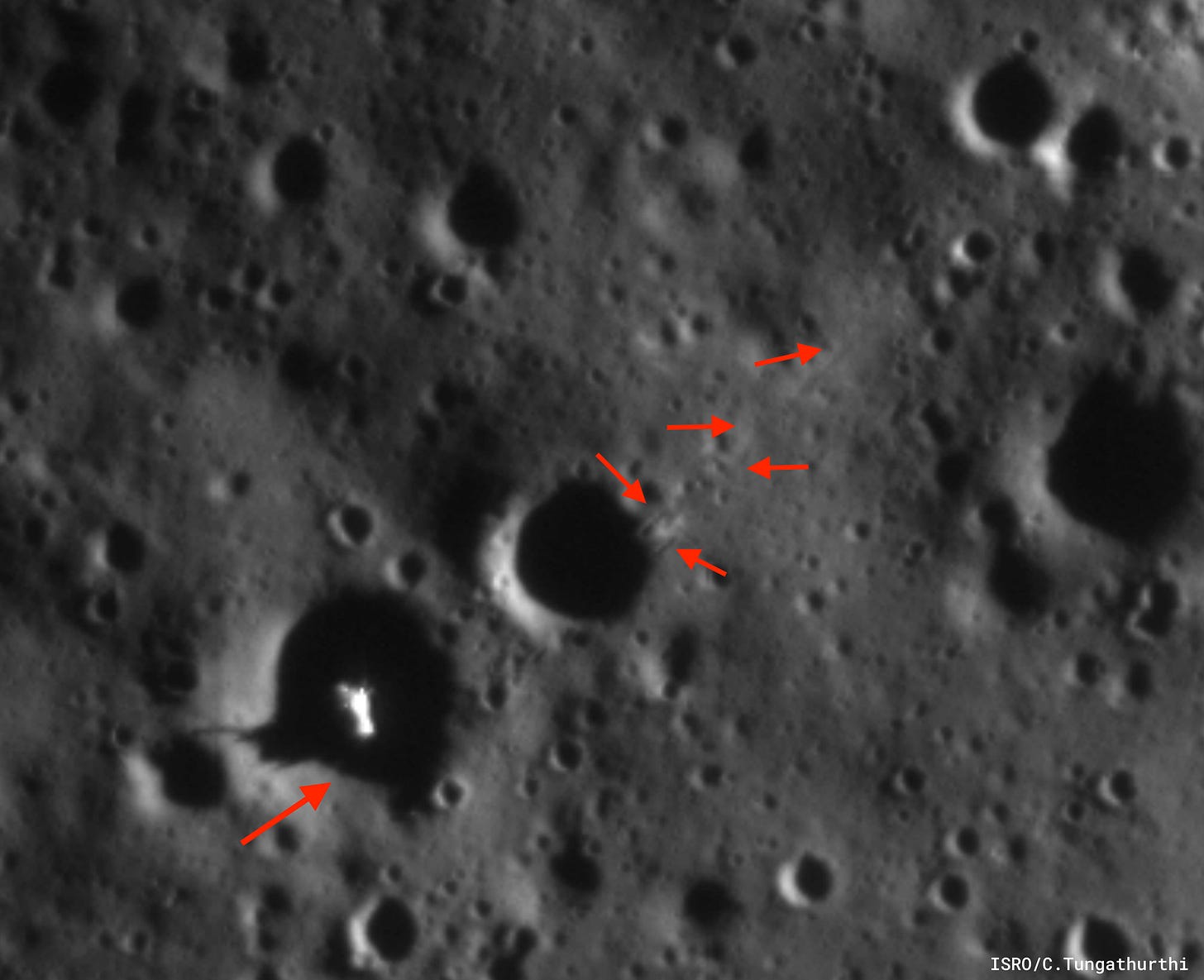
From the 25 cm–per‑pixel high‑resolution imagery, the remains of Athena are plainly identifiable within a ~20 m shallow crater, with the landing legs discernible in the debris silhouette indicated by the arrow. More critically, immediately adjacent—near the smaller neighbouring crater—there are clear, linear soil disturbances consistent with “drag” marks. These surface traces are not random albedo variations; they exhibit coherent directionality and morphology expected from a low-angle, lateral motion following an off‑nominal contact.
Taken together, these features strongly indicate Athena appears to have contacted the surface at excessive velocity, tipped, and then slid or dragged before coming to rest. The orientation of the scuffs and redistributed regolith supports an approach vector from the north-east (NE) toward the final position. While this interpretation must be framed cautiously pending full photogrammetric reconstruction and shadow-model verification, the visible evidence in this dataset materially strengthens the “hard-contact followed by lateral displacement” scenario over a clean, stationary touchdown.
This assessment is in line with Intuitive Machines CTO Tim Crain’s observation on the images I present here
(…) the engine plume surface interaction streak and the first contact of the landing gear.
Importance of High resolution Cameras in LO
High‑resolution lunar‑observation (LO) orbiters are reshaping how we prepare for, execute, and understand landings. Instruments like Chandrayaan‑2’s OHRC deliver technical clarity and public transparency that mission press releases rarely provide. Before touchdown, decimeter‑class imagery maps hazards, tightens target ellipses, and de‑risks descent by revealing boulders, slopes, and regolith textures that coarser datasets miss.
Afterward, the same camera enables independent, ground‑truth reconstruction—pinpointing the landing site, identifying hardware and debris, and reading surface signatures such as plume scour, skid or drag marks, and first‑leg‑contact points. This dual role—pre‑landing safety assurance and post‑landing forensic verification—not only informs ISRO’s planning and anomaly reviews; it also elevates global mission accountability and accelerates shared learning across the lunar community.
These capabilities provide not just public transparency, but also a crucial operational advantage for ISRO itself. As a space-fairing nation, India prepares for Chandrayaan-4 and the LUPEX mission, the OHRC’s data is indispensable for analyzing the real outcomes from other missions such as this one and avoiding repeated, costly mistakes.
For ISRO and for India, where every lunar attempt must count due to tight constraints and a philosophy of frugality and “success on the first try” Key insights derived from OHRC are not just helpful—they are absolutely essential!
Athena: a story of partial success
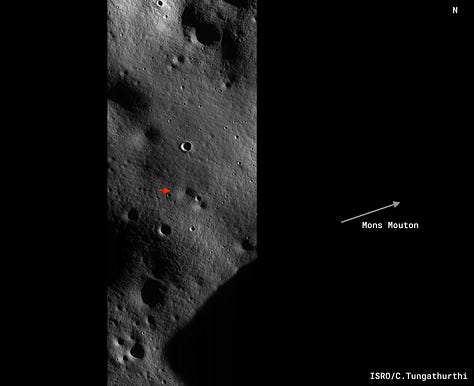

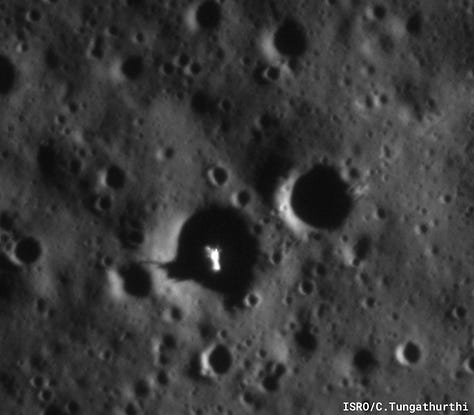
The mark of success in lunar landings isn’t sticking the touchdown call on a livestream—it’s standing the vehicle up, powering it stably, and executing the surface plan to specification. Anything less is, at best, a partial so yes — I call Athena, a story of partial success. Congratulations the entire team of Intuitive Machines! you folks deserve all the praise for making a touchdown — a hard-landing with a partial operations for a day is still better than a crash.
In prior articles, I’ve argued that the bar for calling lunar landings “successes” has been lowered to the point of distortion—driven by commercial spin and echoed uncritically by much of the press. Odysseus (IM‑1) is a case in point: despite the non-deserving unqualified success it was hailed as a ‘mark of success’. A soft-landing dynamic model of a legged lander gives more importance to the stability as a primary criteria for a successful soft-touchdown. I’m happy that this time the coverage has been more restrained—fewer blanket “success” proclamations in the face of obvious stability and operability shortfalls.
While this mission didn’t achieve all of its objectives for NASA, the work that went into the payload development is already informing other agency and commercial efforts
(…)
While we’re disappointed in the outcome of the IM-2 mission, we remain committed to supporting our commercial vendors as they navigate the very difficult task of landing and operating on the Moon.
— NASA
In conclusion, I wish the entire team every success — ich drücke meine Daumen — and I sincerely hope the third time’s the charm.
~FIN



